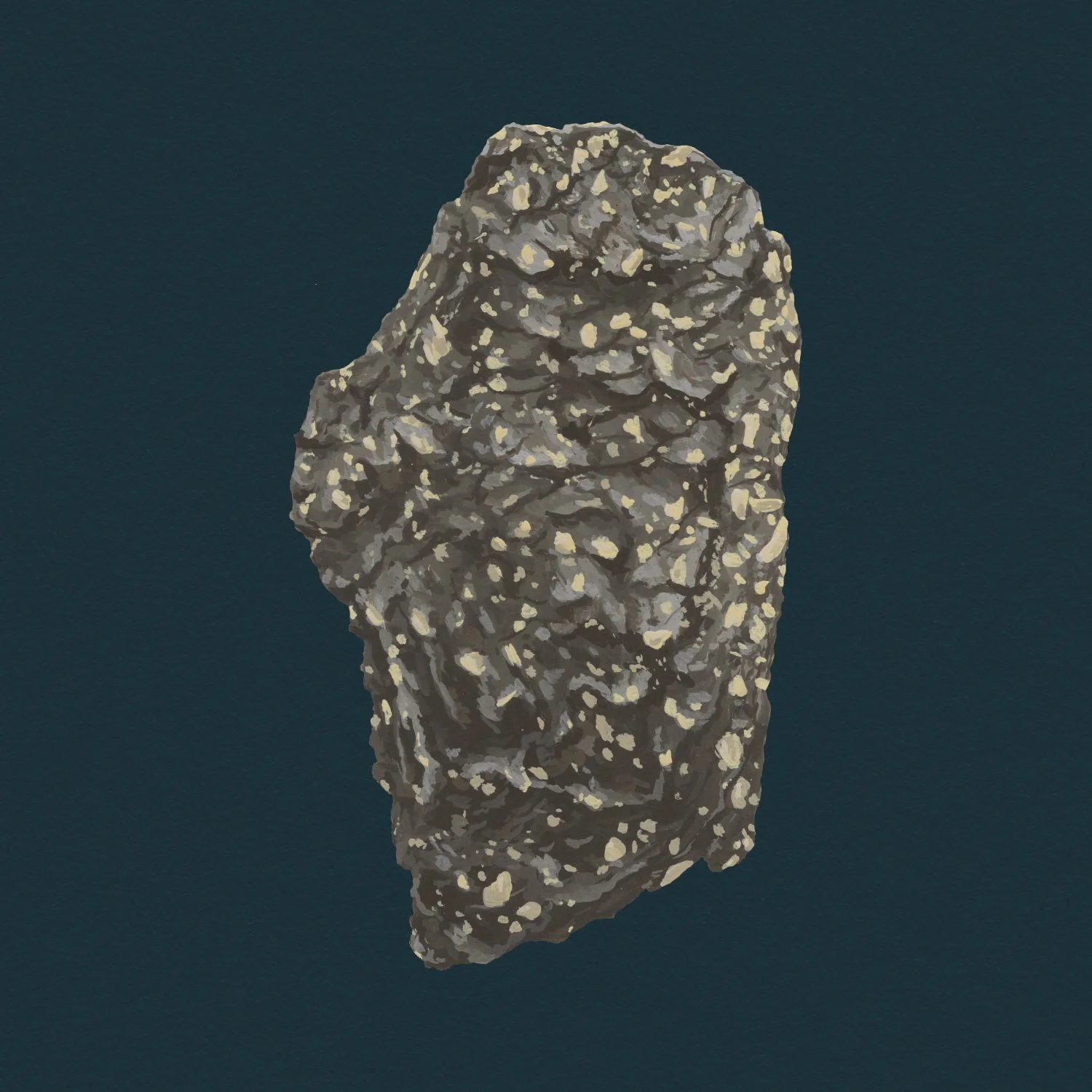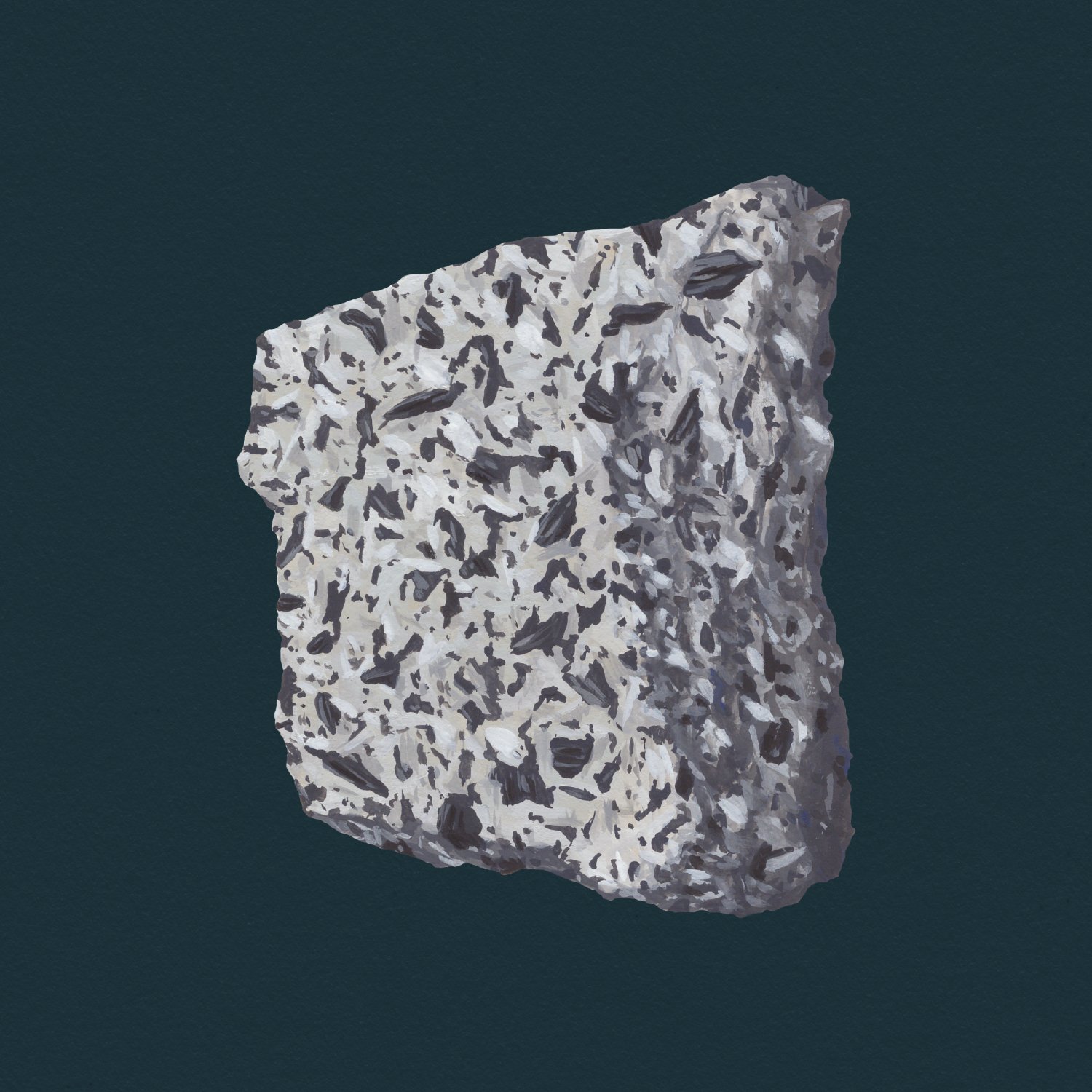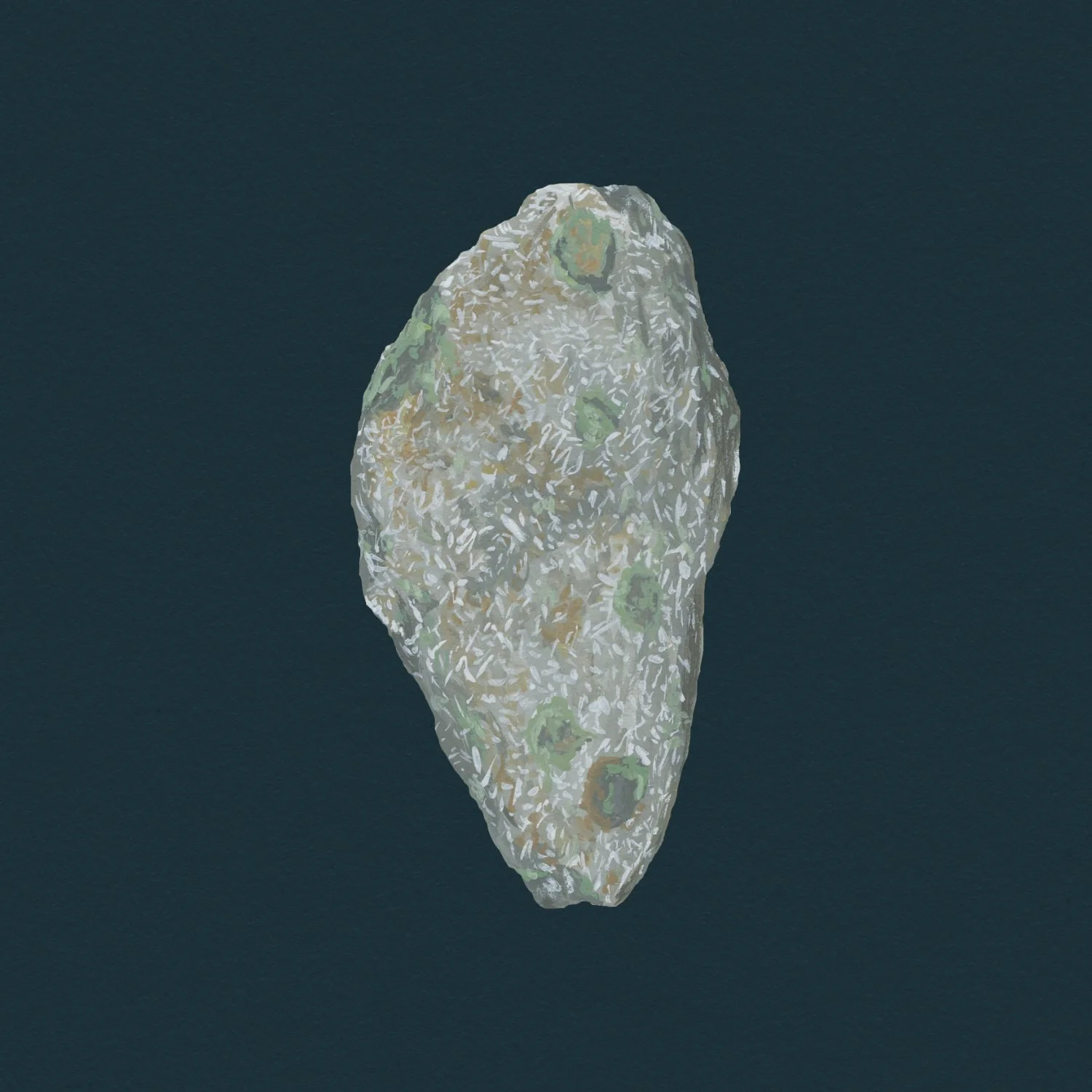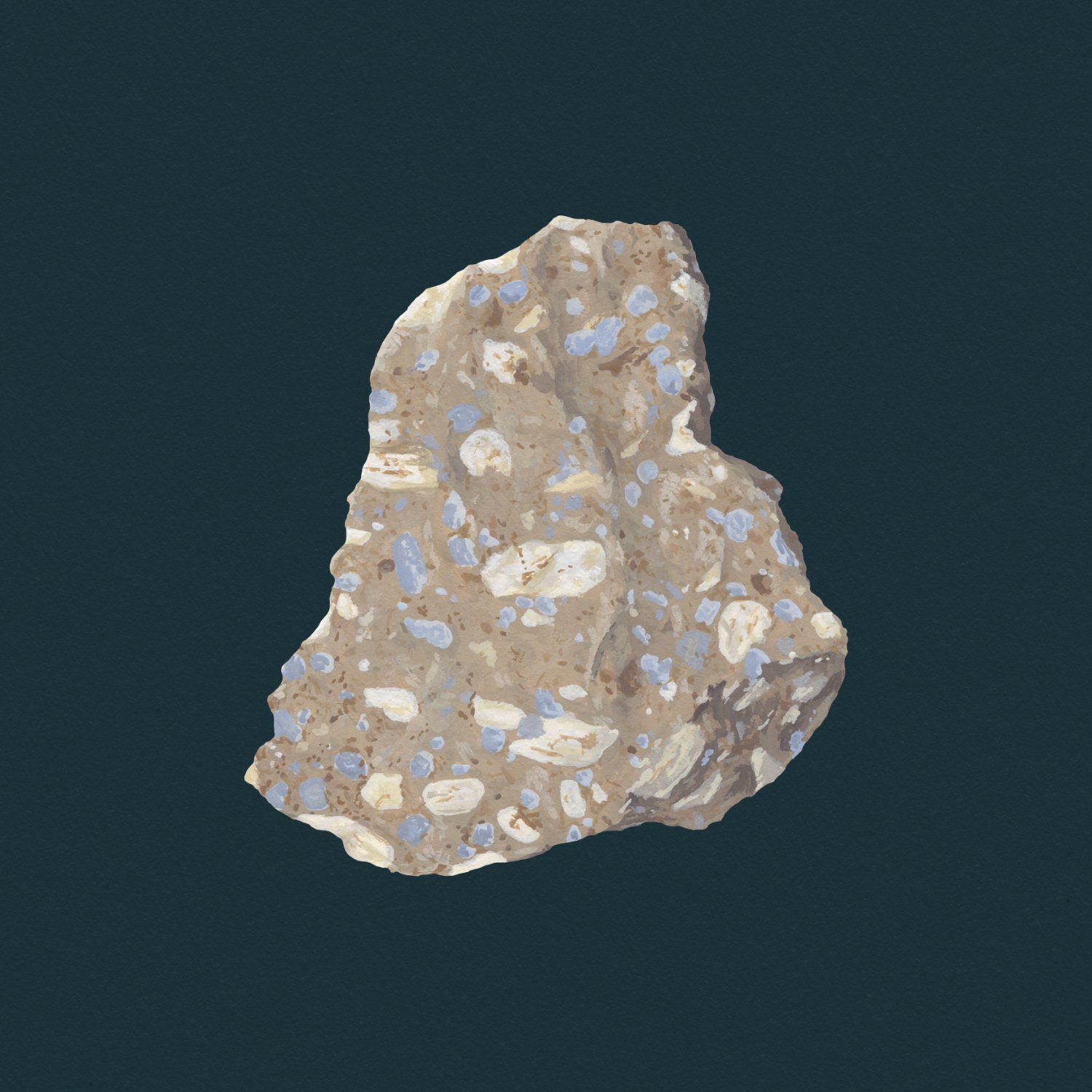A Land of Fire
The future west coast of Scotland, 62 million years ago.
Four million years ago, an asteroid forever changed the face of the Earth. The ecosystems have more-or-less recovered from the mass extinction and yet something was different: this was no longer a planet ruled by dinosaurs. Welcome to the Age of Mammals. The air is hot and humid – after all, we are in a greenhouse world where global levels of carbon dioxide are sky-high. The surface of the Earth is not the only hot place, though. Something is stirring deep below. The crust is getting thinner. An eruption is imminent.
The Atlantic Ocean started forming about 150 million years ago. A rift opened up in the heart of Pangaea, marking the beginning of the supercontinent's end. Slowly but surely, the rift propagated northwards and southwards, thinning the crust and widening the gap. Things got heated (literally) in the North Atlantic with the development of a large mantle plume beneath the area that is now Greenland and Scotland: the combination of the already thin crust with such powerful upwelling of fresh, hot magma created a chain of volcanoes over an area of two thousand square kilometres. The North Atlantic Igneous Province was born. Stretching in a formidable chain from the Faeroe Islands to Lundy, volcanoes blanketed the land in layers of lava and ash. The most intense activity was in Scotland, where several central volcanoes erupted until about 55 million years ago. By that time, the intensity of the mantle plume had decreased and the seafloor spreading had carried the volcanoes too far away from its influence. Eventually, new volcanoes sprung up in the middle of the young ocean and formed a brand new island, Iceland.
Today, the oldest remnants of the opening of the North Atlantic stand still. The years of erosion have removed all surface features and revealed their inner chambers. Never to erupt again, the Scottish volcanoes tower above the landscape like silent monuments to magma.
MEET THE ROCKS
St Kilda: doleritic breccia
This intrusive breccia comes from the Mullach Sgar Complex on Hirta. And what a complex Complex it is: layers of dark dolerite and pale microgranite are intimately interleaved together, a result of their successive intrusions into each other. The breccia represents one such intrusive event during which fresh microgranite came into contact with the previously emplaced dolerite. The heat fractured the pre-existing rock, entrapping it as dark contrasting blocks.
Isle of Skye: amygdaloidal basalt
The Skye Central Volcano is most famous for its gabbro and granite, which form the Black Cuillin and Red Cuillin, respectively. However, most of the island is covered by twenty-four layers of basaltic lavas, which stretch underwater all the way to Canna. After the flows erupted and cooled down, hydrothermal mineral fluids percolated through the solid rock and filled any gaps left by gases with secondary minerals like quartz, calcite, chlorite and zeolite. These infilled holes are called amygdales (from Ancient Greek amugdále – almond, because of their shape).
Isle of Rùm: cumulate
Cropping out in the highest parts of the island are spectacular layered intrusions which formed in long-lived magma chambers. Each distinct layer is made when minerals crystallise from the melt and settle at the bottom of the magma chamber due to gravity. The dark band of the dense mineral chromite marks the lowermost layer, followed by an olive-green layer of peridotite (olivine + pyroxene), green-white troctolite (olivine + plagioclase feldspar) and white anorthosite (plagioclase feldspar). Fresh magma was probably periodically injected into the chamber as the layers can be seen to repeat in fifteen rhythmic sequences.
Isle of Eigg: pitchstone
Before the Isle of Eigg got its distinct geology, its area was covered by lava flows. Later on, they were replaced by flows of water: rivers carried masses of sediment across the cold basalt and gradually covered it. Two million years later, one of the last eruptions of the Skye volcano produced sticky rhyodacite that spread through the river valleys, rapidly cooled down and created a glass-like rock called pitchstone. The highest point of Eigg, An Sgùrr, has spectacular columns made entirely of this rock. They rest atop a layer of conglomerate which contains fossils of pine trees
Ardnamurchan: gabbro
With its concentric layers easily seen from the air, the world-famous Ardnamurchan Central Complex is a textbook volcano. In fact, it is the place where cone sheets (igneous intrusions that dip towards their source like a funnel) and ring dykes (intrusions of magma around the sides of a sunken block of country rock) were described for the very first time (it was long thought that the concentric rings were ring dykes but modern research shows they are probably more similar to cone sheets). The most prominent "ring", made of dark, relatively resistant gabbro, is called the Great Eucrite.
Isle of Mull: benmoreite
Ben More is the type locality of the eponymous benmoreite, which was first described here as a distinct rock in 1964. Benmoreite lies compositionally between trachyte and andesite: it is made of anorthoclase, olivine and augite. This pale rock is just one layer of the Mull Lava Group which forms step-like sequences (called traps) that cover most of the island and parts of Morvern. They surround the calderas in the heart of Mull – collapsed remnants of the ancient volcanoes.
Isle of Arran: porphyritic rhyolite
This rhyolite with phenocrysts (aka large crystals) of quartz and potassium feldspar is found in the middle portion of the Drumadoon Sill on Arran. It was initially stored deeper in the upper crust until it got injected with a fresh batch of basalt. The two magmas mixed and mingled, producing dacite and basaltic andesite. The less viscous basaltic andesite then found its way through pathways in the bedrock, leading the way for the more viscous rhyolite. Eventually, the magmatic mixture couldn't flow any further and cooled down completely as a series of sills.
Ailsa Craig: microgranite
The famous conic island in the Firth of Clyde is made of a blue-grey alkaline microgranite: a mixture of quartz, alkali feldspar and some more unusual minerals like riebeckite, arfvedsonite and aegerine. Somehow, these minerals make the rock extremely resistant to cracking – a property that is useful for two reasons. During the last Ice Age, erratics of this distinct microgranite were scattered by glaciers on the nearby coasts and today serve as important markers of the ice flow. But in the nineteenth century, it was also discovered that the “Common Green” variety of the rock (pictured) makes ideal curling stones that don’t shatter upon impact. It has been quarried to produce them ever since.
Hungry for more? Have a look at these free resources:
Emeleus, C. H. & Bell, B. R. (2005). British regional geology: The Palaeogene volcanic districts of Scotland. Fourth edition. Keyworth, Nottingham: British Geological Survey.
Scottish Geology Trust. (2024). Geosites Pilot Project — Geological Conservation Review (GCR) Sites. Available at: https://geosites.scottishgeologytrust.org/ (13/02/2024).









